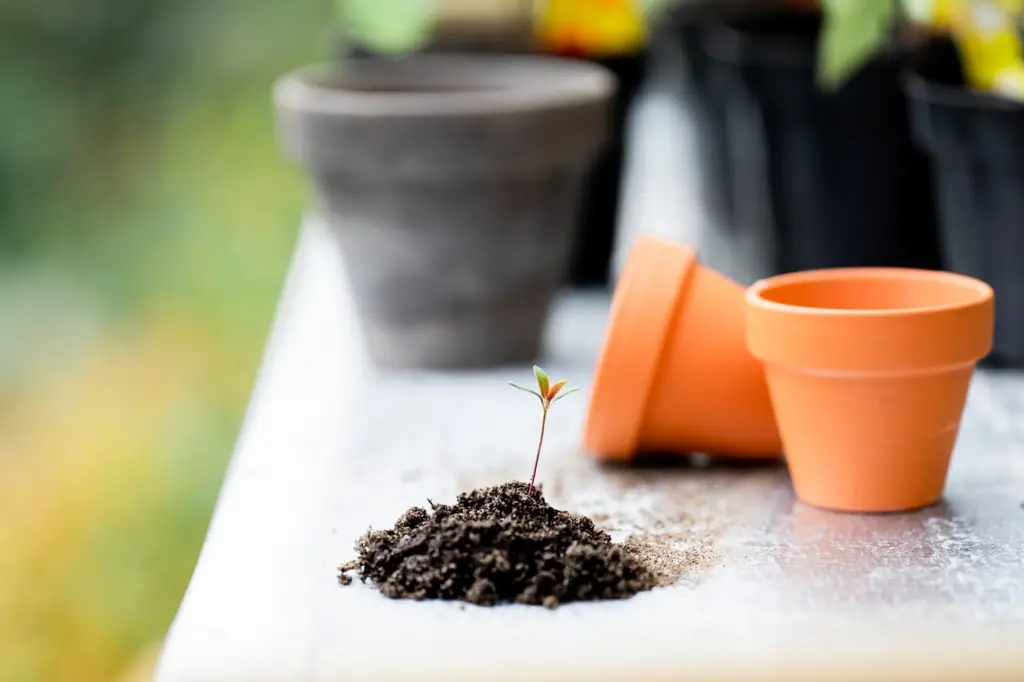Gardening & Rising: Cultivating Nature’s Bounty


Gardening is more than just a hobby; it’s a transformative experience that connects us with nature, promotes sustainability, and provides numerous mental and physical health benefits. Whether you’re cultivating a small balcony garden or managing a sprawling backyard, understanding the fundamentals of gardening and growing can lead to a fruitful and enjoyable endeavor. In this comprehensive guide, we will explore every aspect of gardening, from planning and planting to maintaining and harvesting, equipping you with the knowledge to create your own green oasis.
Table of Contents
ToggleIntroduction to Gardening
Gardening is an ancient practice that has evolved significantly over time. What began as a necessity for food has transformed into a beloved pastime for millions around the world. With the rise of urban living and the increasing interest in sustainable practices, gardening has gained renewed popularity. Today, people garden not only for food but also for relaxation, aesthetics, and environmental benefits.
Why Garden?
- Food Security: Growing your own vegetables and fruits can significantly enhance food security and provide access to fresh produce.
- Mental Health: Engaging with nature has been shown to reduce stress, anxiety, and depression.
- Physical Activity: Gardening is a form of moderate exercise, promoting physical health.
- Environmental Impact: Home gardens contribute to biodiversity, improve air quality, and can help combat climate change.
Table 1: Benefits of Gardening
| Benefit | Description |
|---|---|
| Food Security | Grow your own nutritious fruits and vegetables. |
| Mental Health | Reduce stress and improve mood through nature exposure. |
| Physical Activity | Engage in moderate exercise while gardening. |
| Environmental Impact | Enhance biodiversity and contribute to a healthier ecosystem. |
Planning Your Garden
Successful gardening begins with careful planning. Consider the following factors before you start:
1. Space Assessment
Evaluate the space you have available. Whether it’s a backyard, balcony, or community garden, understanding your area will help you choose the right plants.
- Sunlight: Observe how much sunlight your space receives throughout the day. Most vegetables and flowers need at least 6-8 hours of direct sunlight.
- Soil Quality: Test your soil for pH levels and nutrient content. Healthy soil is crucial for plant growth.
Table 2: Light Requirements for Common Plants
| Plant | Light Requirement |
|---|---|
| Tomatoes | Full sun (6-8 hours) |
| Lettuce | Partial shade (4-6 hours) |
| Basil | Full sun (6-8 hours) |
| Ferns | Low light to indirect sunlight |
2. Choosing Plants
Select plants that suit your climate, space, and gardening goals. Here are some options:
- Vegetables: Tomatoes, peppers, cucumbers, and carrots.
- Herbs: Basil, rosemary, thyme, and cilantro.
- Flowers: Marigolds, sunflowers, and zinnias.
Table 3: Popular Plants and Their Growing Seasons
| Plant | Growing Season | Notes |
|---|---|---|
| Tomatoes | Spring to Summer | Requires staking for support. |
| Carrots | Spring to Summer | Thinner spacing ensures larger roots. |
| Basil | Late Spring to Fall | Prune regularly to promote bushy growth. |
| Zinnias | Spring to Fall | Attracts pollinators; easy to grow from seed. |
3. Designing Your Garden Layout
Consider how you want your garden to look and function. Key design principles include:
- Raised Beds: Ideal for better drainage and soil control.
- Row Planting: Traditional method for larger vegetable gardens.
- Vertical Gardening: Perfect for small spaces, using trellises or wall planters.
Table 4: Garden Design Methods
| Design Method | Description |
|---|---|
| Raised Beds | Elevated planting beds for better soil management. |
| Row Planting | Traditional layout; easy access for maintenance. |
| Vertical Gardening | Space-saving method using walls or trellises. |
Planting Techniques

Once your garden is planned, it’s time to plant! Here are some essential techniques:
1. Soil Preparation
Healthy soil is the foundation of a thriving garden. Here’s how to prepare it:
- Testing Soil: Use a soil test kit to assess pH and nutrient levels.
- Amending Soil: Add organic matter like compost or aged manure to enrich the soil.
2. Sowing Seeds
- Direct Sowing: Plant seeds directly into the soil according to packet instructions.
- Transplanting: Start seeds indoors and transplant seedlings outdoors once they’re established.
Table 5: Seed Sowing Depths
| Plant | Sowing Depth |
|---|---|
| Carrots | 1/4 inch |
| Tomatoes | 1/2 inch |
| Basil | 1/4 inch |
| Lettuce | Surface sow (lightly cover) |
3. Watering Practices
Proper watering is crucial for plant growth:
- Deep Watering: Water deeply but less frequently to encourage deep root growth.
- Mulching: Apply mulch to retain soil moisture and suppress weeds.
Maintenance and Care
Regular maintenance is vital to ensure your garden flourishes. Key tasks include:
1. Weeding
Weeds compete for nutrients and water. Regularly inspect your garden and remove weeds by hand or with tools.
2. Pest Management
Prevent pests from damaging your plants:
- Companion Planting: Some plants can deter pests when planted together (e.g., marigolds with tomatoes).
- Natural Predators: Encourage beneficial insects like ladybugs to control pest populations.
3. Fertilizing
Use organic fertilizers to provide essential nutrients to your plants:
- Compost: Rich in nutrients and improves soil structure.
- Liquid Fertilizers: Can be applied directly to the soil or foliage.
Table 6: Types of Fertilizers
| Fertilizer Type | Description |
|---|---|
| Compost | Organic matter decomposed into nutrient-rich soil. |
| Granular Fertilizer | Slow-release nutrients for prolonged feeding. |
| Liquid Fertilizer | Fast-acting nutrients for quick plant uptake. |
Harvesting Your Bounty
Once your plants are mature, it’s time to enjoy the fruits of your labor!
1. When to Harvest
- Vegetables: Harvest when they reach full size and color.
- Herbs: Regularly trim to encourage growth and prevent flowering.
2. Harvesting Techniques
- Use sharp tools to avoid damaging plants.
- Pick fruits and vegetables gently to avoid bruising.
Table 7: Harvesting Indicators for Common Vegetables
| Vegetable | Harvesting Indicator |
|---|---|
| Tomatoes | Firm and fully colored. |
| Cucumbers | Dark green and firm. |
| Lettuce | Leaves are full size and tender. |
| Carrots | Should be at least 1 inch in diameter. |
FAQ: Common Gardening Questions

Q: How much sunlight do my plants need?
A: Most vegetables require 6-8 hours of direct sunlight daily, while some herbs and leafy greens can thrive in partial shade.
Q: Can I garden in containers?
A: Yes! Container gardening is ideal for small spaces and can accommodate a variety of plants, including vegetables, herbs, and flowers.
Q: How do I prevent pests naturally?
A: Use companion planting, introduce beneficial insects, and employ organic pesticides when necessary.
Q: What should I do if my plants are not growing well?
A: Check for proper sunlight, water, and nutrient levels. Soil testing can help identify deficiencies.
Q: When is the best time to start planting?
A: It depends on your climate and the type of plants you want to grow. Generally, spring is the best time for most vegetables and flowers.
Conclusion: Embracing the Gardening Journey
Gardening is a rewarding journey that allows you to connect with nature, improve your health, and provide for yourself and your family. By understanding the principles of planning, planting, maintaining, and harvesting, you can create a flourishing garden that meets your needs and enhances your life.
As you embark on your gardening adventure, remember that patience and persistence are key. Not every plant will thrive, and that’s okay! Each season offers new lessons and opportunities for growth. So grab your tools, get your hands dirty, and enjoy the beauty of nurturing life through gardening.
Call to Action
Ready to start your gardening journey? Begin by selecting a few plants that excite you and prepare your space. Share your gardening experiences with friends and family, and inspire others to join you in cultivating their own green spaces! Whether you’re growing vegetables for your table or flowers for your soul, every effort in the garden brings joy and
fulfillment. Happy gardening!
- Planting Methods & Seasonal Upkeep [6.14.25] - 19 June 2025
- June However Nonetheless Not Actually Summer time - 19 June 2025
- Understanding Plant Ailments and Their Therapies - 19 June 2025
Gardening is more than just a hobby; it’s a transformative experience that connects us with nature, promotes sustainability, and provides numerous mental and physical health benefits. Whether you’re cultivating a small balcony garden or managing a sprawling backyard, understanding the fundamentals of gardening and growing can lead to a fruitful and enjoyable endeavor. In this…
- June 2025
- December 2024
- November 2024
- October 2024
- September 2024
- August 2024
- July 2024
- June 2024
- May 2024
- April 2024
- March 2024
- January 2024
- October 2023
- September 2023
- June 2023
- April 2023
- November 2022
- October 2022
- September 2022
- July 2022
- May 2022
- February 2022
- December 2021
- November 2021
- October 2021
- September 2021
- August 2021
- July 2021
- June 2021
- May 2021
- March 2021
- February 2021
- January 2021
- December 2020
- October 2020
- September 2020
- August 2020
- June 2020
- May 2020
- September 2019
- July 2018
- March 2018
- April 2017
- April 2016
- January 2015
- October 2014
